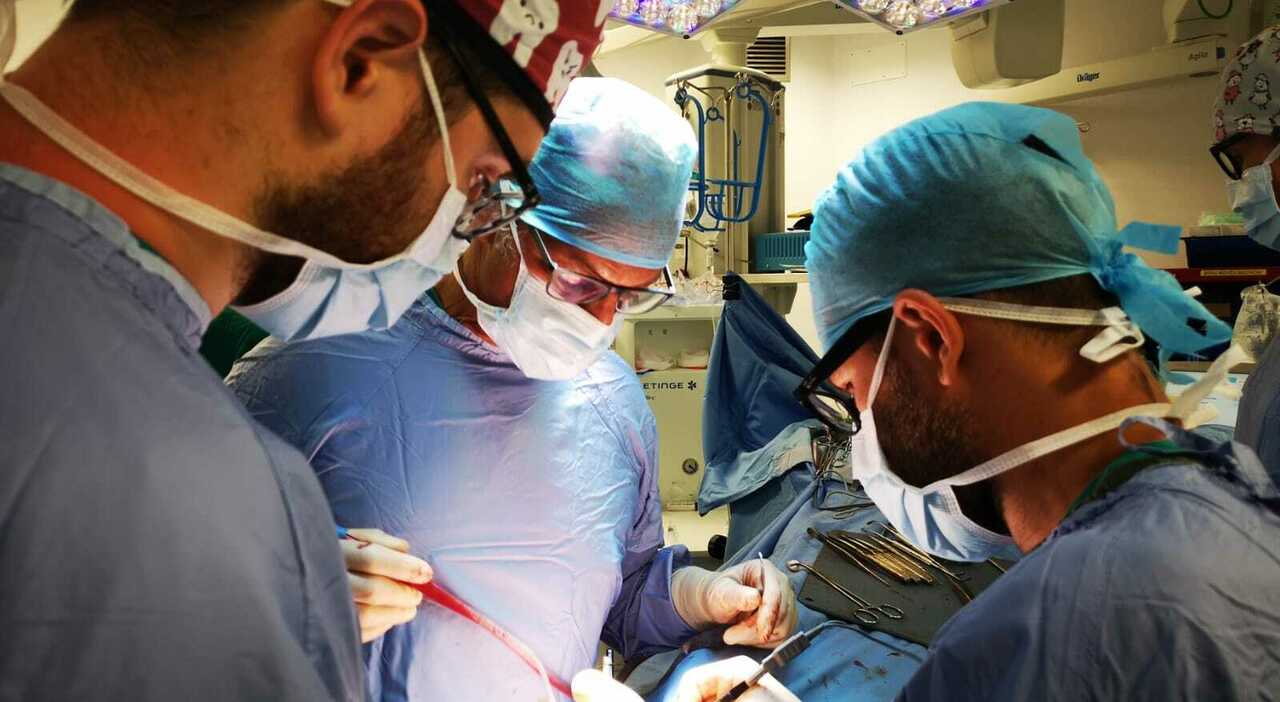Tumor of 70 kilos. When surgeons extracted from the abdomen of a young patient a tumor mass so big they couldn’t imagine it weighed so much. More than the woman herself. The intervention carried out at the beginning of November at theLe Molinette hospital in Turin where, in fact, one was removed ovarian neoformation over 70 kilos. The patient, unaware of the nature of her ailments, had gone to the emergency room for respiratory failureso serious that she had to be immediately assisted by resuscitators. That enormous mass that had grown in her abdomen, until it completely occupied it, was now pushing on the diaphragm and compressing her lungswhich could no longer expand.
Gigantic tumor
The woman she almost suffocated to death. For this reason, the Molinette resuscitators immediately intubated her to stabilize the conditions. Then the incredible surprise at the CAT scan: the presence of an enormous mass, a giant ovarian cyst, the size of a person. She was immediately drained by Dr. Ezio Falletto of the university’s Emergency Surgery 1: 52 liters of liquid. The volume of the mass was thus considerably reduced, allowing Dr. Francesco Moro of the University of Molinette Surgery 2 to remove the neoformation in the following days. The scientific literature reports sporadic cases of enormous formations, such as that of the patient from Turin. The case, therefore, is exceptional, but a few years ago in the USA, an ovarian cystadenoma weighing about 60 kg was removed from a woman in Connecticut, and one weighing over 137 kg was removed in Stanford Hospital. This type of tumor is not the only one that can reach considerable dimensions.
In 2016 Professor Riccardo Masetti, of the Breast Surgery of the Gemelli Polyclinic in Rome removed a 15 kg breast tumor from a 60-year-old lady who declared herself too embarrassed and paralyzed by fear of the disease to ask for help sooner. At Sant’Orsola in Bologna, in 2015, a 13 kg retroperitoneal liposarcoma was removed from a 47-year-old man. Last summer, however, at the Sacro Cuore di Gesù Hospital in Benevento, a 44-year-old man had testicular cancer size of a soccer ball. On the other hand, in the tumor cell a part of the genes, including those used to repair the DNA, is altered: it goes crazy, to use a metaphor, and begins to multiply abnormally.
Cystadenoma of the ovary
«Il cystadenoma of the ovary recalls Professor Saverio Cinieri, president of the Italian Association of Medical Oncology – it is a relatively frequent tumor and of a benign nature in 85% of cases. It is a sort of ovarian cyst that grows disproportionately and consists mainly of liquid. It mainly affects young pre-menopausal women, between the ages of 20 and 40, so much so that it is sometimes mistaken for pregnancy. This case is surprising for its size and for the fact that the patient was not alarmed by the massive weight gain. It is important, even at an early stage, to give weight to the warning symptoms of an abdominal mass, which can range from bloating, abdominal pain, constipation, loss of appetite to a sense of gastric fullness because the mass compresses the stomach . However, ovarian cystadenomas can reach significant dimensions before giving symptoms. In the case of Turin, the conduct of the doctors was exemplary. An intervention of this complexity requires great teamwork and the application of many skills». The neoformation discovered at the Molinettes originated from the epithelial cells of the ovary which, in addition to multiplying uncontrollably, also secrete a gelatinous substance. Even if the cells do not have the characteristics of malignancy, a tumor of this size can still be fatal due to the mass effect it causes on vital organs, such as the lungs, causing serious dysfunction. Compression on the veins can also lead to the formation of thrombi and pulmonary embolisms, often with a fatal outcome. Dieticians took care of the patient from Turin after the operation: these patients have, in fact, severe protein-calorie malnutrition because such masses, occupying the entire abdominal cavity, prevent them from eating adequately. After an operation of this type, the intervention of the plastic surgeon is also often necessary to remove the excess residual skin and reconstruct the abdominal wall.
Maria Rita Montebelli
